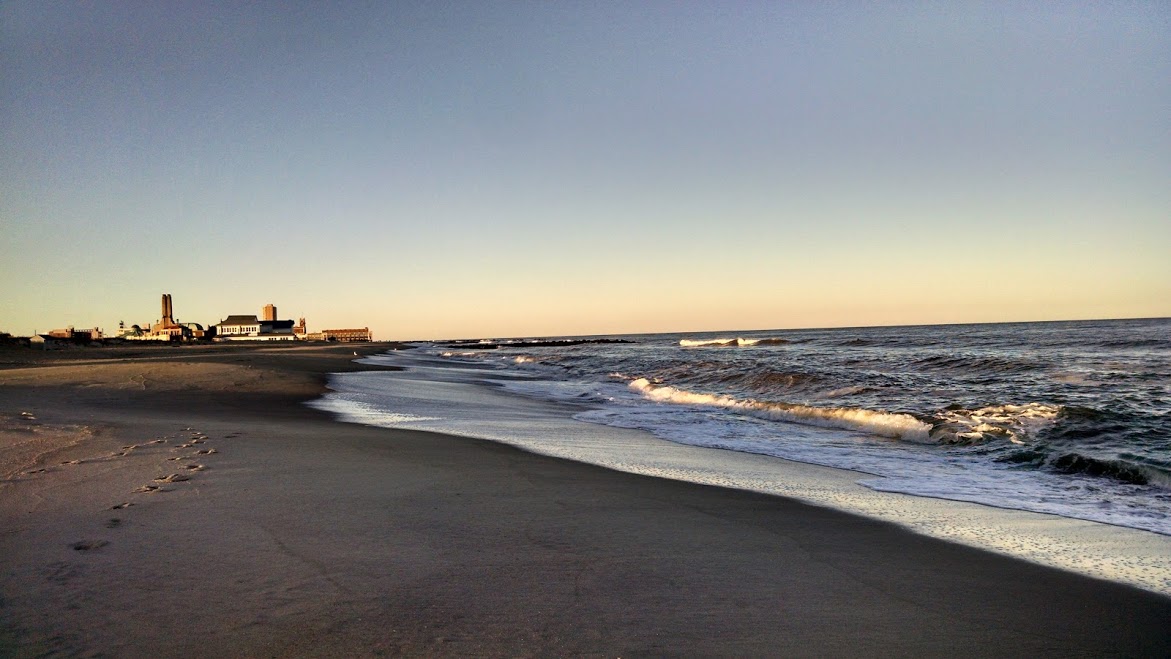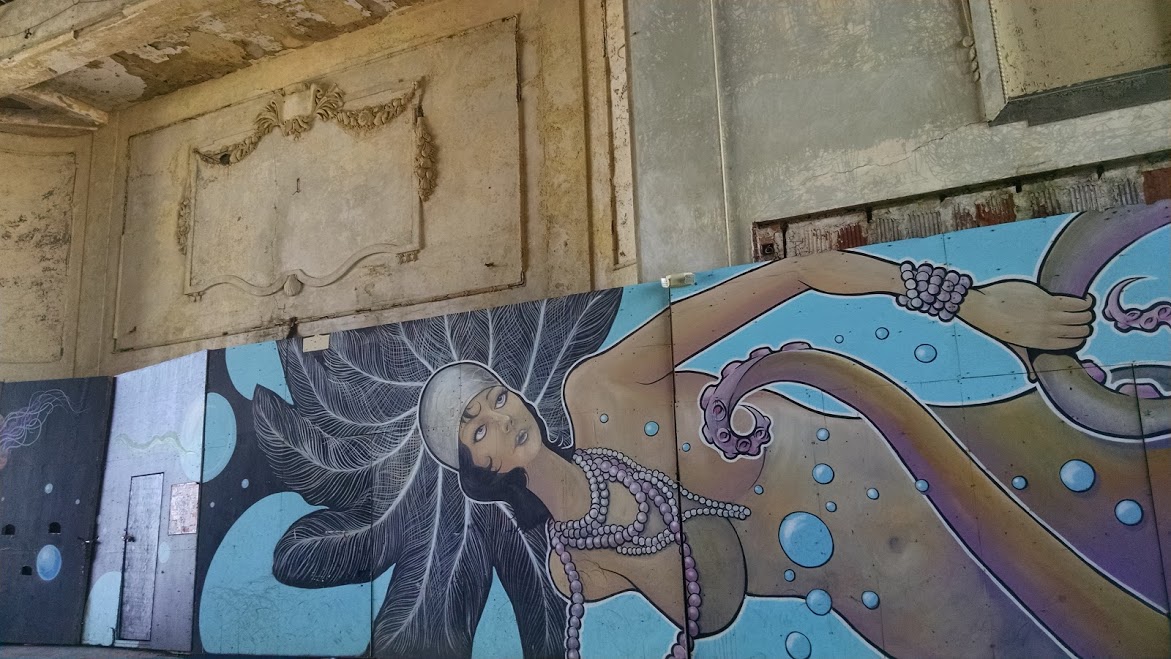Thoughts on Asbury Park: a Few Days at the Jersey Shore
Wanting to avoid the expense, inconvenience, and utter unpleasantness of flying, my wife and I have planned our weekend trips and vacations around train travel over the past several years. A proponent of the contemporary cult of travel (and any airline executive) would blanch at this practice. The whole wide world awaits you. Why limit yourself to your tiny corner of the globe? Fortunately, we live in the New York metropolitan region with its extensive local and regional rail networks and an enviable abundance and variety of sites and geography.
For well over a century, weary urbanites have visited the Jersey Shore for relaxation, refreshment, and entertainment. Embracing this tradition, my wife and I rode the rail to Asbury Park, New Jersey, a storied town experiencing resurgence and reinvestment.

Looking toward the Asbury Park boardwalk in the morning (Photograph by author).
Although hailed as the spiritual home of Bruce Springsteen and as an ever-evolving music center, Asbury Park suffered from crime, drugs, poverty, and neglect in the latter half of the twentieth century. Palace Amusements, known for its iconic and creepy mascot Tillie, was torn down in 2004. The once glittering Casino sunk into deep disrepair. Drifters and disreputable characters populated the boardwalk. The vibrancy and delight of Asbury Park drifted further and further into memory and legend.

A mural hiding the decay of the Asbury Park Casino (Photograph by author.)
Then, somewhere during the last ten or so years, the gay community, artists of every stripe, and hipsters discovered the beautiful, yet world-weary Convention Hall, the cheap housing only a stone’s throw from the Atlantic Ocean, and the underutilized downtown—all within a quick train ride from New York and northern New Jersey. The history of Asbury Park proved to be too seductive to resist for creative folks and those standing outside of the norms of American culture.
Today, downtown Asbury Park is bustling with restaurants, bars, shops, and a movie theater. The boardwalk is alive with couples, families, and friends enjoying the ocean and the music. Any visitor passing through the train station recognizes that stubborn hard work remains if this “boom” is to develop into long-term prosperity, but an almost tangible optimism infects the same visitor while sipping a local craft beer at a downtown drinking hole or browsing at the quirky shops in Convention Hall.

The author standing outside Convention Hall, Asbury Park, New Jersey. Notice the ornate exterior details of the building (Courtesy of Tinsel Creation).
Recently, the New York Times reported on the rebirth of Asbury Park and the large-scale investment occurring within the beach town. While walking through the Casino, stabilized after many years of abandonment, yet more resembling a glorious ruin than a structure fully utilized in the present, I couldn’t help but worry how such wealth and attention might impact Asbury Park. Would it still be interesting and enchanting? Instead, would it be transformed into another boring, bland playground for those with the most means?
The echoes of a lost past, the visible and undeniable decay and ruin are what imbue Asbury Park with its uniqueness and daresay charm. They enchant the place. They draw the crowds, the photographers, the story-tellers.
If Convention Hall is ever completely restored and made spiffy and new, would teenagers sporting punk rock shirts still gawk at the placard listing upcoming musical acts? Would middle-aged couples dressed in black still take pictures of the building’s architectural details? Would an odd cross-section of parents with young children, flannel-wearing hipsters, and crusty Shore types still drink together at the bar and watch the Atlantic waves? Would Asbury Park still be a place for them?